
Toner Poems
If you’re in Brooklyn this month, you’ll want to check out a new exhibition at the Brooklyn Museum: “Copy Machine Manifestos: Artists Who Make Zines.” Once upon a time, before the Internet, like-minded strangers (and we do mean strange) used to communicate with each other via “zines.” The curators of the exhibit define “zines” as “low-budget, limited-circulation publications (short for “magazine” or “fanzine”) that are not political pamphlets or countercultural newspapers.” They were enabled—like social media—by a brand-new technology: in this case, the photocopier, which made the very-short-run reproduction of printed material easy and relatively inexpensive.
The show’s territory starts In 1969, coinciding with the widening availability of photocopy machines, and runs to the present. The selection of zines, posters, films, videos, paintings, garments and other curios is pretty great, and you see many repeat visitors (like myself) wandering the galleries. There is an enormous amount of material to take in.
… There is a distinct crossover between punk rock and zine culture, with its critique of conformism, capitalism and mainstream music. The bondage-inspired aesthetics of punk are captured in Bruce LaBruce’s films and zines, while schlocky horror movies and pulp fiction are obvious inspirations for others. Some zines are direct responses to other publications, like Vile and File, which take the layout and design of Life magazine and turn these into racier, punk-like versions. Later zines delve more into early ’90s identity politics.
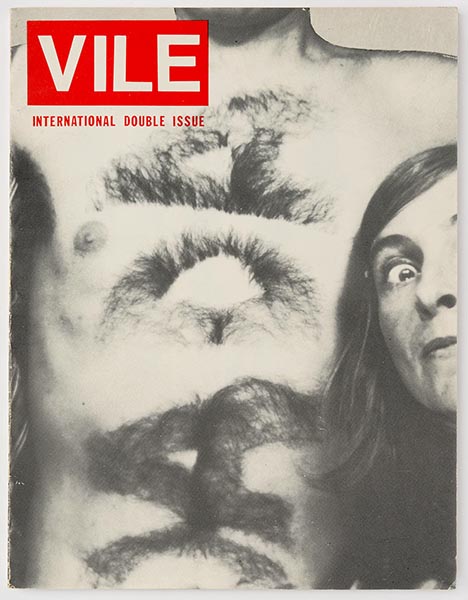
… The most important thing this exhibition shows is how communication channels will open up anywhere, even in eras of deep censorship and repression. In this regard, the zines and everything else in “Copy Machine Manifestos” feel like an echo from the past, but also a blueprint for future generations of artists and dissidents.
The exhibition runs through March 31.
A Poem on the Underground Wall
At Print magazine, Steven Heller talks to the members of a Ukrainian type foundry that produces faces that reflect Ukraine’s Soviet history as well as the current war.
Kyiv Type Foundry is the collaboration between three Ukranians, Yevgeniy Anfalov and Oles Gergun, currently in Germany, and Vadym Axeev in Bar, Ukraine. The trio formed a type foundry that produces Cyrillic (and Latin) fonts based on Soviet-era Ukrainian types, inspired, among other things, by the beautiful mosaics destroyed by what they call “decommunization.” With an uncritical view of the Soviet typographic heritage that was either ignored or labeled as “Muscovite,” they discovered many treasures made by Ukrainians between 1917 and 1991. They planned a font library, finished the typefaces for the launch, programmed the website—and in 2020 Kyiv Type Foundry was born.
By the way, KTF’s recent Kyiv Metro is designed to help raise money for Ukraine’s design students.
“Echoing WWII events, in 2022 Kyiv Metro became the bomb shelter for thousands of its inhabitants. This sad fact is another big milestone in its rich history, which continues to be written. Built six decades ago, it carries 1.32 million passengers a day (2016) and is one of the most beautiful man-made creations in Ukraine. As part of station architecture, the letters of the Kyiv Metro tell us a lot about its history. It’s a book. You can read it in many directions. Exiting each station, you’ll notice different lettering [approaches]. Look at them, analyze and make fonts of them,” we told to our students in our summer 2023 workshop called “Kyiv Metro Fonts.” So they did it within a week, and we took [the results] and carefully finished six most representative of them.
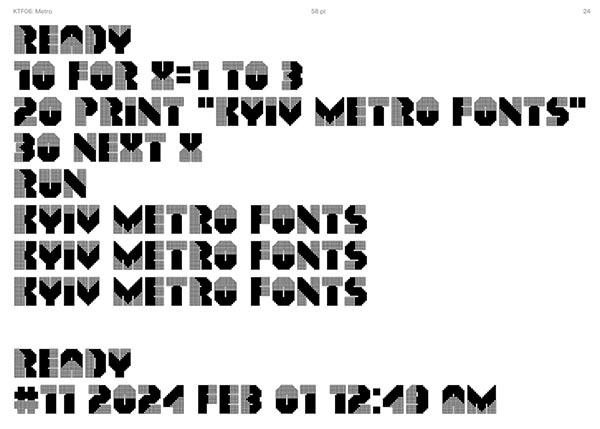
Judas!
Just like Dylan in ’65—the Boston Typewriter Orchestra has gone electric. Via Laughing Squid:
The Boston Typewriter Orchestra, a group of talented musicians who play manual typewriters as instruments, performed their original composition, “Selectric Funeral” as their submission to the NPR “Tiny Desk” concert series. This is the very first song where the group has incorporated an electric typewriter.
Actually it looks like a pretty big desk.
Solutions That Stick
Sticky notes. How did the human race survive for so long before their invention? Sliced bread is vastly overrated, but sticky notes…. And now, via Core77, a new device lets you turn any paper into a sticky note. With the Memo X by Taiwan-based Zenlet, you insert a piece of paper and it cuts the paper and applies a light-tack adhesive.
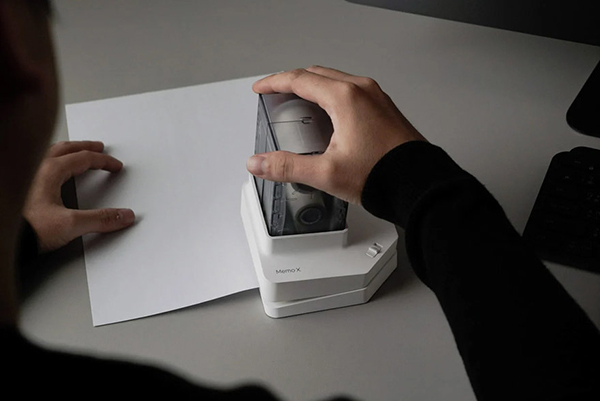
The default is a standard square size, but the cutter can be adjusted.
The ability to turn discarded paper packaging and the reverse side of junk mail into usable Post-Its is appealing. The question is whether that's worth the $74 Kickstarter price. Also bear in mind, the adhesive doesn't come out of thin air; the gizmo is loaded with a roll of the stuff. One roll is good for 250 applications, then you've got to buy a new roll from Zenlet at $3 to $4 a pop (depending on how many you order).
Graphene Goes Up the Wall
Was it a good week for graphene news? It’s always a good week for graphene news! Graphene-enhanced infrared wallpaper for efficient home heating. From (who else?) Graphene-Info:
By infusing wallpaper with graphene, NexGen Heating has created a product that emits infrared heat, warming objects and people directly in a manner reminiscent of sunlight. This direct form of heating is not only efficient but also customizable to fit the aesthetics of any room, promising an unobtrusive addition to homes. Furthermore, the potential for integration with solar panels and batteries could make this a cornerstone of sustainable living, significantly reducing reliance on fossil fuels. NexGen Heating says infrared can provide greener, cheaper heating when paired with solar panels and batteries.
Easy as Pi
“Pi Day” (3/14) is coming up in a couple of weeks, and , for those who celebrate, here is a useful word we recently learned: piphilology, defined as “the creation and use of mnemonic techniques to remember many digits of the mathematical constant π.” The most common piphilological mnemonic is a “piem” (“pi” and “poem”) in which the number of letters in each word is equal to the corresponding digit of π. To wit: 3.141592653589 ,
How [3] I [1] want [4] a [1] drink [5], alcoholic [9] of [2] course [6], after [5] the [3] heavy [5] chapters [8] involving [9] quantum [7] mechanics [9]! —Sir James Hopwood Jeans
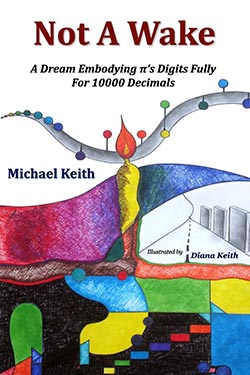 It may or may not surprise you to know that there was even a book (of course there was!) written using various forms of piphilology: Not A Wake: A Dream Embodying (pi)’s digits fully for 1000 decimals.
It may or may not surprise you to know that there was even a book (of course there was!) written using various forms of piphilology: Not A Wake: A Dream Embodying (pi)’s digits fully for 1000 decimals.
a collection of poetry, short stories, a play, a movie script, crossword puzzles and other surprises, constructed according to a unique principle: counting the number of letters in successive words of the text (the first word has 3 letters, the next word has 1 letter, the next word has 4 letters, and so on) reveals the first 10,000 digits of the famous mathematical number pi (3.14159265358979...).
Perfect for that super nerdy friend or relative—or perhaps a blood enemy.
Apocalypse Eventually
Says Axios:
Not since the atomic bomb has so much money been spent in so little time on a technology its own creators admit could ... wipe out our entire species.
Self-driving cars? The Kardashians? Nope—everyone’s favorite topic these days: AI.
Between the lines: Both sides of this debate share the view that AI is unimaginably gigantically powerful, whether it destroys us or saves us.
Probably true! But that’s also a self-serving view that puts their work at the center of the universe, notes Scott Rosenberg, Axios managing editor for tech.
The history of tech is that things get overhyped — then wind up being big, but not as huge as sold.
What we’re watching: OpenAI, knowing that people fear AI destroying the world, is trying to mitigate those fears by building trust that it's deploying products as safely as possible.
And, well, you have to admit, we already have plenty of other ways we could destroy the world or eliminate humanity, from COVID or another worse pandemic, to climate disaster, to atomic bombs. Let’s face it, AI is pretty weak tea when it comes to world destruction.
Scents of Doom
Speaking of the Apocalypse (or perhaps even weak tea), one question one might have is: what would the Apocalypse smell like? Unpleasant, almost certainly, but now we can find out. Here’s a fragrance you may want to dab on should you be invited to a party by people you dislike, or want to make a really bad first impression on a blind date. Thomson & Craighed have released—which may be the best word—Apocalypse:
Apocalypse is a complex fragrance based on olfactory materials detailed in The Book Of Revelation as it appears in the King James Bible first published in 1611. We established our list of terms from the book and then worked in collaboration with perfumer Euan McCall to develop this chemical depiction of biblical end times.
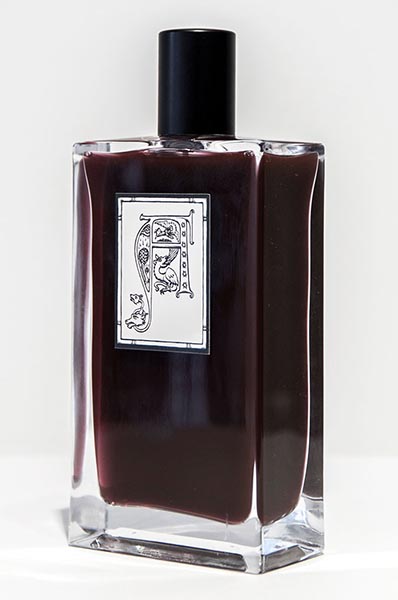
To be fair, Thomson & Craighed are artists, not perfumiers, but still…
The perfume exists in a limited edition of only fifty 100ml bottles each boxed with signed inserts and with a label design by Steve Carroll. A secondary scent associated with material decay is also sprayed into each box lining.
There’s a trend in packaging worth keeping tabs on.
If you’re wondering what’s in it:
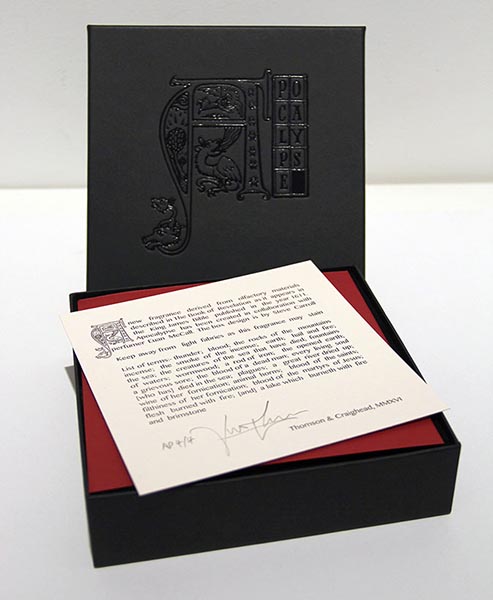
AI-Yi-Yi, Part the Infinity: Big Science
Knowing of avant garde artist and musician Laurie Anderson as we do, we’re not surprised by the fact that, via The Guardian, she has been “growing hopelessly hooked on an AI text generator that emulates the vocabulary and style of her own longtime partner and collaborator, Velvet Underground co-founder Lou Reed, who died in 2013.”
In one experiment, they fed a vast cache of Reed’s writing, songs and interviews into the machine. A decade after his death, the resulting algorithm lets Anderson type in prompts before an AI Reed begins “riffing” written responses back to her, in prose and verse.
Just like Sister Ray said.
“I’m totally 100%, sadly addicted to this,” she laughs. “I still am, after all this time. I kind of literally just can’t stop doing it, and my friends just can’t stand it – ‘You’re not doing that again are you?’
“I mean, I really do not think I’m talking to my dead husband and writing songs with him – I really don’t. But people have styles, and they can be replicated.”
The results, Anderson says, can be hit and miss. “Three-quarters of it is just completely idiotic and stupid. And then maybe 15% is like, ‘Oh?’. And then the rest is pretty interesting. And that’s a pretty good ratio for writing, I think.”
The Hole Truth
You know how it is. You get in your car and wonder: in which direction is the center of the Milky Way Galaxy? Alas, Google Maps is no help, and Apple Maps is probably just making it up. Well, if these are the problems you reckon with, we have a solution. Via Ars Technica:

While using Galactic Compass, you set your iPhone on a level surface, and a big green arrow on the screen points the way to the Galactic Center, which is the rotational core of the spiral galaxy all of us live in. In that center is a supermassive black hole known as Sagittarius A*, a celestial body from which no matter or light can escape. (So, in a way, the app is telling us what we should avoid.)
There was also a song called “Sagittarius A*” on the last Arcade Fire album which is also to be avoided.
“It is astoundingly grounding to always have a feeling of the direction of the center of the galaxy,” Webb told Ars Technica. “Your perspective flips. To begin with, it feels arbitrary. The middle of the Milky Way seems to fly all over the sky, as the Earth turns and moves in its orbit.”
Kind of makes you feel small, doesn’t it?
Just Tote it
Do you like Nike’s “swoosh” logo? Do you need to carry around a jumbo shrimp? If so, good news! Via Core77, Le Sac Swoosh is a designer handbag shaped like Nike’s iconic branding.

Don’t you dare make fun of it, or she’ll scratch your eyes out. (We assume it’s a she; it could be an orc.)
Judging by the model’s fingernails, it’s indeed meant as a handbag and not an athletic accessory. The bag’s unique, presumably licensed shape is ideal for carrying bush axe blades, giant prawn, boomerang fragments or certain gourds. Comes in three colors.
A steal (!) at $450
What’s a Sub Weigh?
While Red Lobster perhaps missed their chance at cobranding the Nike Le Sac Swoosh for their Endless Shrimp special, Subway has developed its own tote bag capable of storing three footlongs. Says Food & Wine:
Subway announced it’s giving away 100, limited-edition Sidekick Safes, which resemble a blueprint tube, to help the ultimate footlong fans keep their favorite footlongs safe.
From what?
Subway says it “commissioned a team of engineers” to ensure it can withstand the elements. Each bag is handcrafted and sports the famed Subway green color and logo, measures 39 inches long, and includes three separate insulated footlong-sized storage units, so you have more than enough room for Sidekicks and sandwiches to last you an entire day. It also comes with a keypad lock and a carrying strap so you can both easily transport your sammies and rest assured that your roommates, coworkers, and especially your spouse, can’t get their hands on your tasty treats.

How does one get one, pray tell?
you just need to go to SubwaySidekickSafe.com between February 29 and March 2. There, you'll be asked to upload an image of yourself enjoying your favorite Footlong Sidekick and will be entered to win from there. The winners will be randomly selected.
Dignity? Nah. Now, if enjoying Endless Shrimp could snag us a Nike swoosh bag, we’d be up for it. We’d even grow our fingernails.
This Week in Printing, Publishing, and Media History
February 26
1564: English playwright, poet, and translator Christopher Marlowe born.
1616: Galileo Galilei is formally banned by the Roman Catholic Church from teaching or defending the view that the earth orbits the sun.
1802: French author, poet, and playwright Victor Hugo born. (We had a hunch.)
1909: Kinemacolor, the first successful color motion picture process, is first shown to the general public at the Palace Theatre in London.
1918: American author and critic Theodore Sturgeon born. (It was an amok time.)
February 27
1691; English publisher, founder of The Gentleman’s Magazine Edward Cave born.
1807: American poet and educator Henry Wadsworth Longfellow born.
1812: Poet Lord Byron gives his first address as a member of the House of Lords, in defense of Luddite violence against Industrialism in his home county of Nottinghamshire.
1891: American businessman and founder of RCA David Sarnoff born.
1902: American journalist, author, and Nobel Prize laureate John Steinbeck born.
February 28
1683: French entomologist and academic René Antoine Ferchault de Réaumur born. After observing wasps building their nests, Réaumur was the first to propose making paper out of wood.
1827: The Baltimore and Ohio Railroad is incorporated, becoming the first railroad in America offering commercial transportation of both people and freight.
1935: DuPont scientist Wallace Carothers invents nylon.
1939: The erroneous word “dord” is discovered in the Webster's New International Dictionary, Second Edition, prompting an investigation.
1940: Basketball is televised for the first time (Fordham University vs. the University of Pittsburgh in Madison Square Garden).
1944: English graphic designer and cofounder of Hipgnosis Storm Thorgerson born.
1954: The first color television sets using the NTSC standard are offered for sale to the general public.
1970: American journalist, author, and accordion player Daniel Handler born. Under the name Lemony Snicket, he is the author of the children’s book series A Series of Unfortunate Events.
1983: The final episode of M*A*S*H airs, with almost 106 million viewers. It still holds the record for the highest viewership of a season finale.
February 29
1712: February 29 is followed by February 30 in Sweden, in a move to abolish the Swedish calendar for a return to the Julian calendar.
1860: American statistician and businessman, co-founder of the Computing-Tabulating-Recording Company Herman Hollerith born.
1940: For her performance as Mammy in Gone with the Wind, Hattie McDaniel becomes the first African American to win an Academy Award.
March 1
1790: The first United States census is authorized.
1869: Dmitri Mendeleev finishes his design of the first periodic table of elements and sends it for publishing.
An alternative version of the periodic table, as designed by Theodor Benfey in 1964. pic.twitter.com/RTWgQ4jQK8
— Quite Interesting (@qikipedia) February 27, 2019
1872: Yellowstone National Park is established as the world’s first national park.
1873: E. Remington and Sons in Ilion, N.Y., begins production of the first practical typewriter.
1893: Electrical engineer Nikola Tesla gives the first public demonstration of radio in St. Louis, Mo.
1896: Henri Becquerel discovers radioactive decay.
1914: American novelist and literary critic Ralph Ellison born.
1917: American poet Robert Lowell born.
1917: The Zimmermann Telegram is reprinted in newspapers across the United States after the U.S. government releases its unencrypted text.
1922: American publisher and founder of MAD Magazine William Gaines born.
1998: Titanic became the first film to gross over $1 billion worldwide. (It is worth checking out this site that adjusts the highest-grossing movies for inflation.)
2006: English-language Wikipedia reaches its one millionth article, Jordanhill railway station.
March 2
1545: English diplomat and scholar, founder of the Bodleian Library Thomas Bodley born.
1717: The Loves of Mars and Venus is the first ballet performed in England.
1791: Long-distance communication speeds up with the unveiling of a semaphore machine in Paris.
1904: American children's book writer, poet, and illustrator Dr. Seuss (né Theodor Seuss Geisel) born.
1930: English novelist, poet, playwright, and critic D. H. Lawrence dies (b. 1885).
1933: The film King Kong opens at New York's Radio City Music Hall.
1942: American novelist and screenwriter John Irving born.
1942: American singer-songwriter, guitarist, producer, and actor Lou Reed born.
1982: American philosopher and author Philip K. Dick dies (b. 1928).
1983: Compact discs and players are released for the first time in the United States and other markets. They had previously been available only in Japan.
1995: Yahoo! is incorporated.
2010: Hailey Dawson, an American girl a with 3D-printed robotic hand, born.
March 3
1847: Scottish-American engineer and academic and inventor of the telephone Alexander Graham Bell born.
1873: The U.S. Congress enacts the Comstock Law, making it illegal to send any “obscene, lewd, or lascivious” books through the mail.
1875: Georges Bizet’s opera Carmen receives its première at the Opéra-Comique in Paris.
1875: The first ever organized indoor game of ice hockey is played in Montreal, Quebec, Canada.
1882: Italian swindler, con artist, and “businessman” Charles Ponzi born. He was a practitioner of what eventually became known as the “Ponzi scheme.”
1885: The American Telephone & Telegraph Company is incorporated in New York.
1904: Kaiser Wilhelm II of Germany becomes the first person to make a sound recording of a political document, using Thomas Edison's phonograph cylinder.
1920: Canadian-American actor and purported inventor of transparent aluminum James Doohan born.
1923: TIME magazine is published for the first time.
1931: The United States adopts “The Star-Spangled Banner” as its national anthem.
1949: American historian, journalist, and author Ron Chernow born.
1951: Jackie Brenston, with Ike Turner and his band, records “Rocket 88,” often cited as “the first rock and roll record,” at Sam Phillips’s recording studios in Memphis, Tenn.
1953 English singer-songwriter and guitarist Robyn Hitchcock born.














